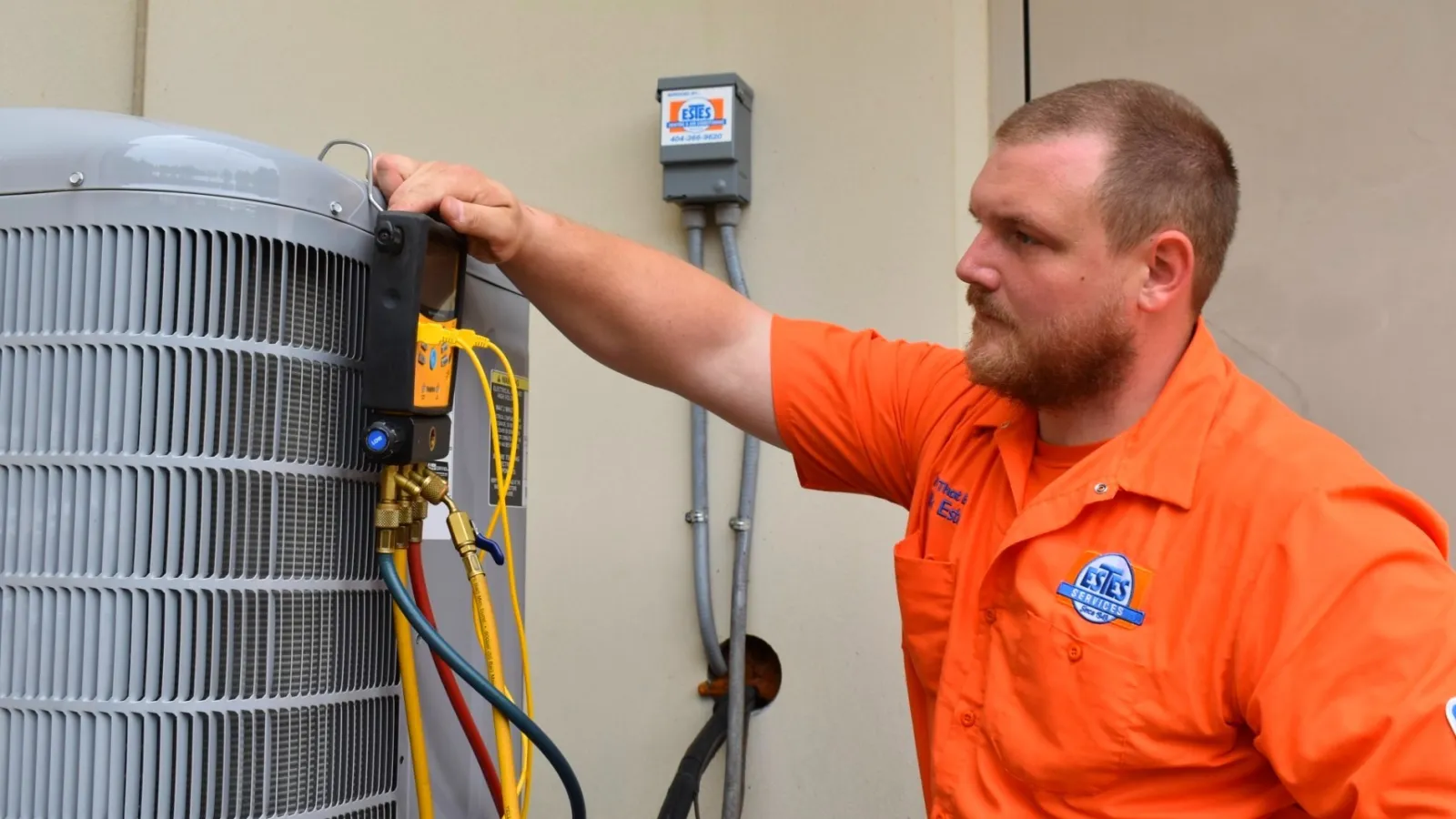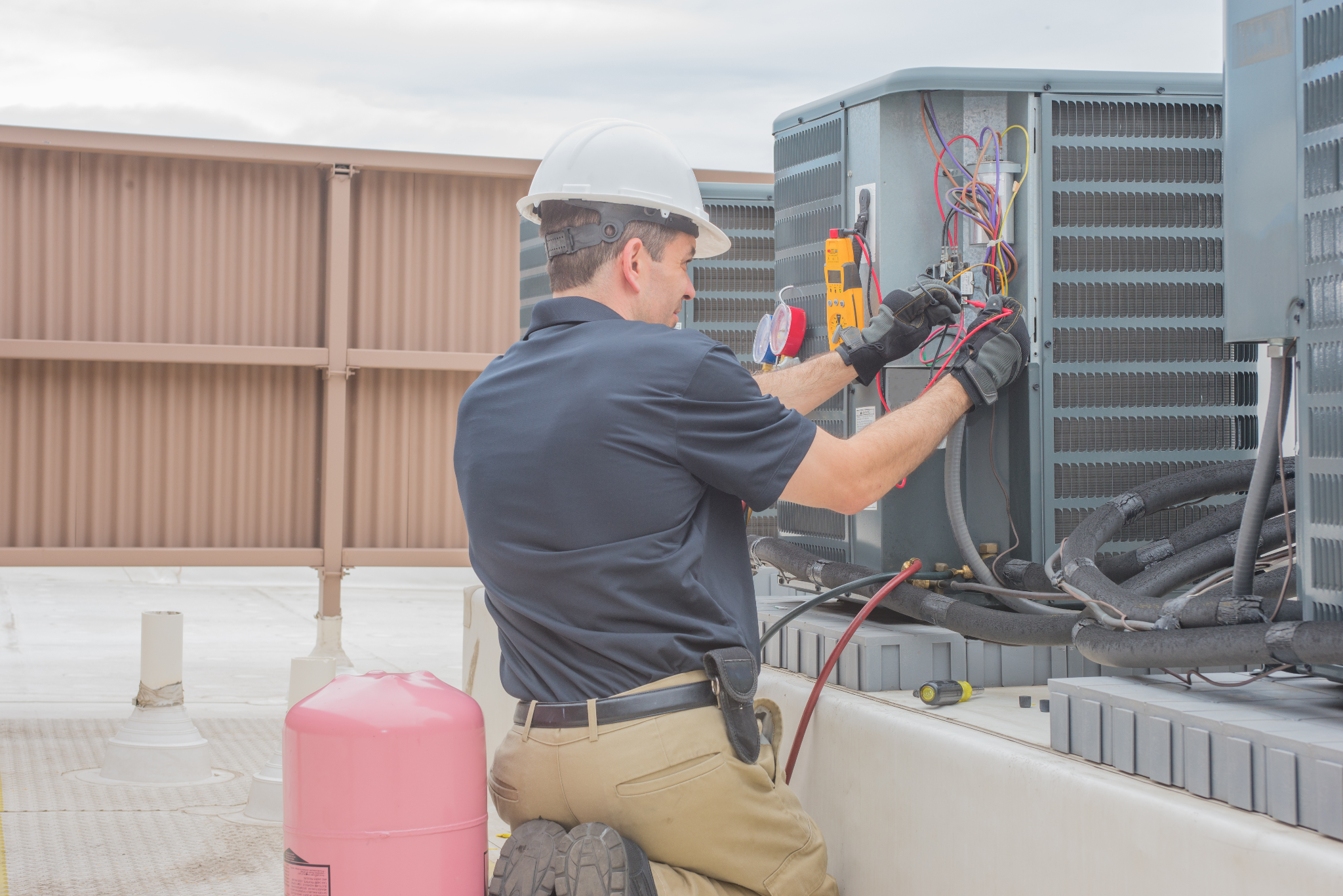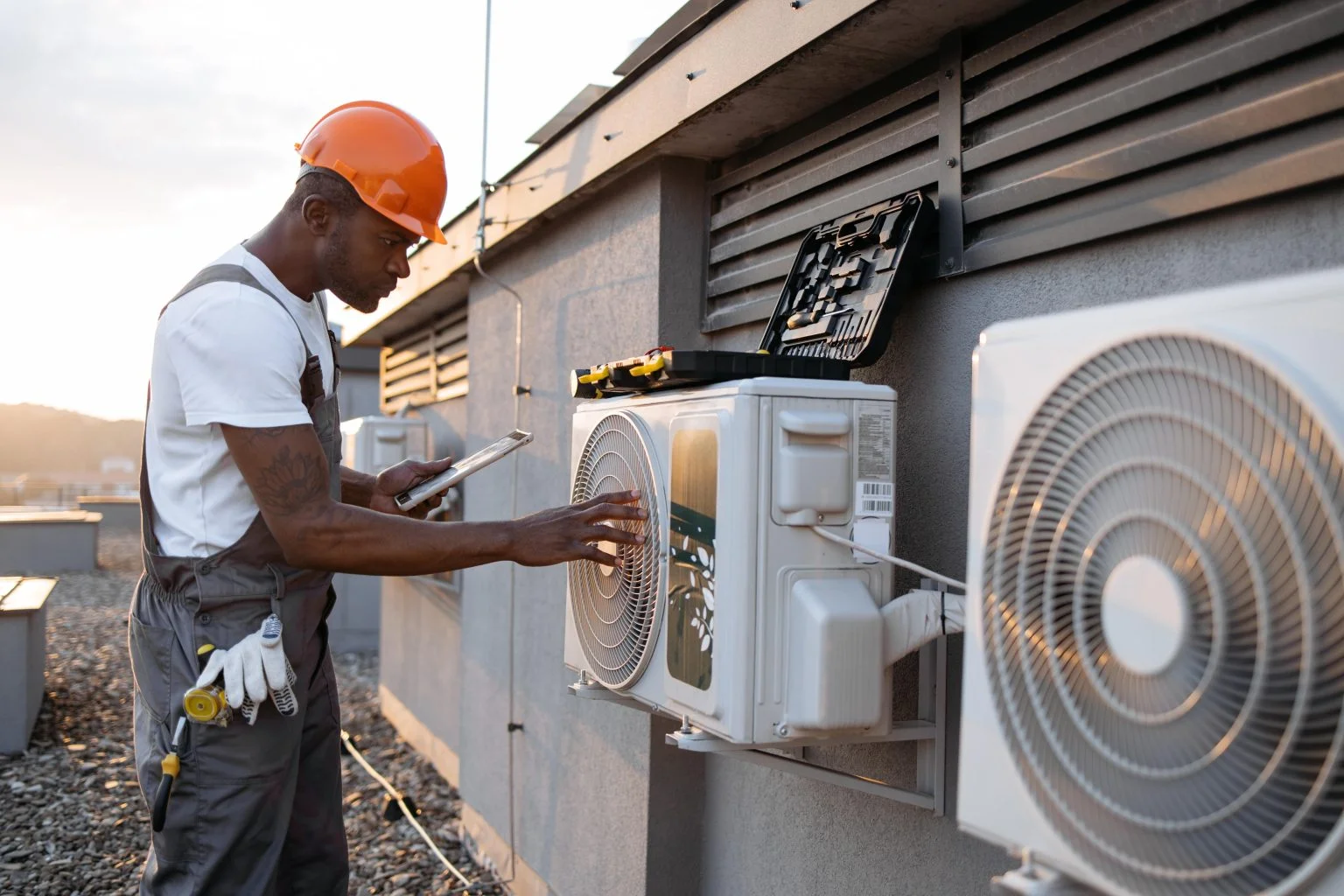Boost Your Home’s Efficiency with Routine heat pump service
Boost Your Home’s Efficiency with Routine heat pump service
Blog Article
How a Heatpump and Heating System Collaborate to Enhance Your Home's Heating Efficiency
Comprehending how a warm pump and furnace job with each other is crucial for home owners seeking effective home heating services. Each system has its staminas, supplying a balanced approach to home convenience. The warmth pump masters modest temperature levels, while the heater provides rapid heat during severe cold. This synergy not only decreases power costs yet also boosts the lifespan of both devices. What aspects affect this cooperation, and how can homeowners optimize their advantages?
Understanding Warmth Pumps: How They Work
Although many individuals might be not familiar with their inner functions, warmth pumps play a vital duty in modern heating unit. These gadgets run by moving heat from one place to an additional, making use of the principles of thermodynamics. In chillier months, a warm pump removes heat from the outside air, ground, or water, and transfers it inside your home to warm up the space. On the other hand, throughout warmer months, it can reverse the procedure, acting as an a/c unit by eliminating heat from inside to the outside.Heat pumps contain an evaporator, condenser, compressor, and expansion valve. The refrigerant within the system absorbs warm as it vaporizes at reduced temperatures and stress. The compressor after that increases the pressure and temperature of the refrigerant, enabling it to release heat as it condenses. This efficient process can greatly minimize power usage compared to conventional heating methods, making warm pumps a sustainable choice for climate control in homes.
The Role of Furnaces in Home Heating
Furnaces play an important role in home heating by providing a dependable source of warmth during the colder months. They run by creating warm with combustion or electrical resistance, distributing it throughout the home through air ducts or glowing systems. The effectiveness of a heater is frequently measured by its Yearly Gas Usage Efficiency (AFUE) ranking, which suggests how effectively the device converts gas right into heat.Furnaces can utilize different power resources, consisting of gas, propane, power, or oil, enabling homeowners to choose the most suitable choice for their demands. Unlike heatpump, which might struggle in severe cool, heaters preserve consistent performance, making certain that indoor temperature levels remain comfy despite outdoor problems. In addition, modern heating systems often come outfitted with advanced innovation, such as smart thermostats and variable-speed blowers, enhancing their effectiveness and responsiveness. This convenience makes furnaces a critical component in all-encompassing home heating methods.

Advantages of Using Both Systems Together
Integrating the staminas of both heating systems and warmth pumps can result in a more reliable and effective home heating option. Using both systems allows home owners to make the most of the heatpump's power effectiveness during milder temperature levels while counting on the furnace for even more extreme cold problems. This dual approach can substantially decrease power expenses, as warmth pumps take in less electrical energy than conventional home heating techniques when temperature levels are moderate.Additionally, utilizing both systems together can improve convenience levels in the home. Heatpump can give constant, even home heating, while heating systems can rapidly increase ambient temperature levels when needed. The integration of both systems can expand the lifespan of devices by lowering wear and tear on each unit, as they share the workload. Inevitably, homeowners can take pleasure in a well balanced, cost-effective heating remedy that adjusts perfectly to differing weather condition problems, ensuring a warm and welcoming home throughout the cold weather.
Just How Warmth Pumps and Furnaces Complement Each Other
They create a complementary heating system that optimizes performance and comfort when property owners integrate warm pumps and heating systems. Heatpump operate by transferring heat from the outside air or ground, making them highly efficient in moderate environments. They succeed throughout milder temperature levels, supplying economical home heating. Alternatively, heaters produce warm through combustion or electrical resistance, providing strong, immediate heat throughout severe chilly conditions.The combination of these 2 systems permits vibrant modifications based on temperature variations. Throughout warmer months or milder winter season days, the heat pump can take the lead, conserving power and lowering expenses. As temperatures drop, the furnace can perfectly involve, guaranteeing regular heat throughout the home. This harmony not only optimizes energy usage however likewise enhances the life-span of both systems, as each device runs within its suitable performance array. Together, they develop a balanced environment that adjusts to differing climate needs.
Maximizing Effectiveness: Tips for Homeowners
Property owners can enhance their heating performance with several sensible techniques. Establishing a normal maintenance timetable, integrating clever thermostat innovation, and implementing efficient insulation and securing services are vital steps. These actions not just boost comfort yet additionally lower power expenses.
Regular Upkeep Set Up
To guarantee optimal home heating effectiveness, developing additional hints a regular maintenance timetable is important for any kind of home. Homeowners must prioritize routine examinations of both warm pumps and heaters to identify peak efficiency. This consists of transforming air filters each to three months, as clogged filters can substantially lower effectiveness. In addition, scheduling professional maintenance a minimum of yearly enables technicians to recognize and address prospective problems prior to they rise. Home owners ought to additionally cleanse the heatpump's outside system to stop particles build-up that can prevent airflow. By sticking to a routine upkeep timetable, property owners not just improve their furnace' performance yet additionally prolong their life-span, leading to greater comfort and lowered power expenses throughout the colder months.
Smart Thermostat Assimilation
Incorporating a clever thermostat into a home heating unit can significantly improve power performance, particularly as it allows for precise control over temperature level settings. These devices can learn the home owner's schedule and preferences, automatically changing the temperature to maximize comfort while decreasing energy use. They can lower heating throughout times when the home is empty, decreasing unnecessary consumption. Many clever thermostats additionally supply real-time energy usage data, allowing house owners to make enlightened decisions regarding their home heating behaviors. Furthermore, remote accessibility using smartphone apps permits customers to adjust setups from anywhere, guaranteeing the home is warm upon return. On the whole, clever thermostat integration not look at this now just improves convenience but considerably adds to energy savings and effectiveness.
Insulation and Sealing Solutions
Smart thermostats play a vital role in power performance, yet their effectiveness can be greatly enhanced by proper insulation and securing remedies. Home owners should focus on shielding floors, attics, and walls to reduce warm loss. Top quality insulation materials, such as spray foam or fiberglass, can greatly enhance thermal resistance. Furthermore, sealing spaces around doors, air ducts, and windows avoids cold air infiltration and warmth retreat. Weatherstripping and caulking work techniques for addressing these leakages - heat pump service. Routine examinations for air leakages, together with using blower door tests, can help determine problem locations. By purchasing insulation and sealing, house owners can maximize the performance of their heating unit, inevitably causing lowered power consumption and reduced energy bills
Common Myths Concerning Warm Pumps and Furnaces
What mistaken beliefs border warmth pumps and heaters? Lots of individuals mistakenly think that warm pumps are inefficient in colder environments. In truth, this link modern-day heatpump are designed to run successfully even in low temperatures, giving reliable heating throughout wintertime. One more usual misconception is that heating systems are constantly a lot more reliable than heatpump. Nonetheless, this depends upon the specific energy sources and efficiency rankings of the systems concerned. Some may also think that using both systems at the same time is unneeded, however actually, this combination can enhance home heating effectiveness, particularly during severe weather. In addition, individuals frequently think that warm pumps need consistent maintenance, when in fact, they have comparable upkeep needs to traditional home heating systems. By exposing these misconceptions, homeowners can make more enlightened choices regarding their home heating alternatives, inevitably leading to improved convenience and power performance in their homes.
Upkeep Considerations for Combined Equipments

Regularly Asked Concerns
Can Warm Pumps Work Effectively in Incredibly Cold Climates?
Warmth pumps can struggle in incredibly chilly environments because of lowered efficiency and warm removal limitations. However, improvements in modern technology have actually led to models developed for much better performance in such conditions, improving their practicality in rough environments.
Just How Lengthy Do Warm Pumps and Furnaces Commonly Last?
Heatpump generally last 15 to 20 years, while heaters have a life-span of 15 to three decades. Normal maintenance can prolong their long life, guaranteeing reliable operation and minimizing the requirement for early replacements.

What Is the Typical Expense of Putting Up Both Systems?
The typical price of mounting both a heat pump and a heating system generally ranges in between $5,000 to $10,000 - heat pump service. Variables influencing this expense consist of system dimension, installation intricacy, and local labor rates
Are There Tax Incentives for Using Energy-Efficient Home Heating Systems?
Numerous home owners ask about tax incentives for energy-efficient heating systems. Various government and state programs often use refunds or credit ratings, encouraging the adoption of lasting innovations to reduce power intake and advertise ecological responsibility.
How Do I Choose the Right Size Heatpump and Heater?
Choosing the ideal size heat pump and heater entails calculating the home's square video, considering insulation top quality, and reviewing regional climate. Consulting an expert can ensure suitable system efficiency and energy efficiency based upon details needs. heat pump replacement ooltewah tn. Comprehending how a heat pump and heater job together is vital for home owners looking for efficient home heating services. In chillier months, a warm pump essences heat from the outdoors air, ground, or water, and transfers it indoors to warm the living space. When house owners integrate warmth pumps and heating systems, they produce a corresponding heating system that maximizes efficiency and comfort. Heat pumps operate by transferring heat from the outdoors air or ground, making them very efficient in modest environments. Warm pumps can battle in extremely cold climates due to reduced performance and warmth removal restrictions
Report this page